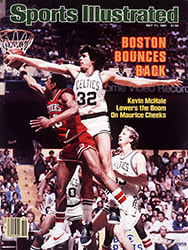
FOR RIDER OR RACER, A BIKE COMPUTER GIVES YOUR PEDALING EXTRA PIZZAZZ
Computers have made their mark on nearly every aspect of the times—from the new Cadillacs that come with their own dashboard versions to the Columbia space shuttle. But sports haven't been forgotten, and this summer bicyclists will benefit from a new model, more complex than any heretofore produced.
The Bike Computer, designed by Entex, a Compton, Calif. toy manufacturing firm that specializes in hand-held electronic games, is a weatherproof handlebar-mounted device designed to enrich cycling. "It's the most important breakthrough since the derailleur," claims Cliff Slobod, an Entex spokesman. While others may disagree with Slobod—the claim is certainly open to argument—the computer does promise to add a new dimension to the sport: a way to program your bike before pedaling it.
For $95 buyers get an eight-ounce, seven-by-three-inch microprocessor unit which resembles an oversize pocket calculator. It is powered by four "AA" batteries and connected to the bike's front wheel via a frictionless magnetic sensor. The sensor counts each wheel revolution, and after the wheel diameter is entered, the computer can function as a combination clock, odometer and electronic training aid.
Before beginning a ride, the cyclist enters the distance (in miles or kilometers) he intends to cover and the amount of time he wants to do it in. The computer then flashes back the average speed required, and after the cyclist sets off it continues to provide any other relevant information he might need.
A touch of one button calls up current speed. Another reveals distance covered, another distance remaining. Average speed as well as peak speed attained are instantly available. Time-of-day, stopwatch and alarm-clock functions are among those built in. Should the cyclist need motivation, an electronic pacer occupies the bottom half of the computer's display. This consists of two moving, illuminated triangles, one propelled by the cyclist, one by the computer. The computer commands its marker to move one-tenth of the way across the screen for each tenth of estimated trip time elapsed. The cyclist's marker moves for every tenth of distance actually covered, and the rider can see at a glance how far he's ahead or behind schedule.
"Practically the only thing we don't show," says Slobod, "is miles per gallon. But when we figure out how to show miles per calorie, we'll really have it made."

